Teachers adjust to remote learning
Photos provided by Wayne Houle
AP World History teacher Wayne Houle writes reminders on post-it notes before an upcoming AP World History department meeting.
Oct 12, 2020
Like his past eight years of teaching in the classroom, Wayne Houle navigates through a flood of papers and post-it notes on his desk. However, this time, it is his desk, in his home office, without the faces of students lined up in rows in front of him.
On his left stands a tall, black mic to sound as crisp as he can for his students in his online classes, whose faces have been replaced by pixels on a screen. Placed carefully on the stand of the mic, a small post-it note reads “AP TEST May 10 8:00 A.M”, a date coming faster than he would like. And instead of the screaming fluorescent lights that shine through every corner of his usual classroom, three lamps softly illuminate his desk.
In this unusual setup, Houle teaches AP World History, depicting queens, kings, princes and emperors throughout time who have built, consolidated and destroyed their kingdoms. For Houle, it is easy to critique the mistakes and successes of these historical figures in hindsight. However, like these figures, he finds trouble in managing his students.
“Humans are pack animals that need a village,” Houle said. “Our village is now virtual, and it is not the same thing. At all. Being human is to be with other humans.”
Nothing in the College Board curriculum could have prepared Houle for teaching his class through a computer screen.
“Nothing can beat the experience of physically present humans discussing and debating a topic,” Houle said. “It’s difficult to feel the energy of the class from behind a laptop screen. That energy is an important part of the way a good classroom works. It grows throughout the year, and each class has a different flow of energy accompanying it.”
For Houle, lingering anxiety over the content that he teaches accompanies his initial worry about social interaction. In his physical classroom, he can measure students’ responses through facial expressions and body language. Now, Houle doesn’t have the faces to read or the gestures to follow to help him through the silence that plagues every meeting.
“I have serious concerns,” Houle said. “Are they learning? Do they understand the depth of the situations we learn about? So much of the way I teach is wrapped up in actually looking at my students, paying attention to facial expressions and body language, so as to tell if people are present – in the moment with me.”
At the same time, Mariah Vu opens up her laptop with the same questions and concerns looming around her mind as Houle.
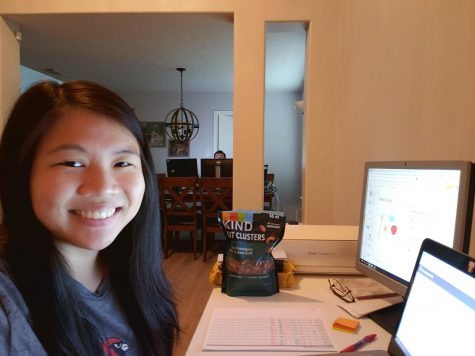
In her new workspace 20 feet apart from her husband, Vu teaches Pre-AP and IB Biology, describing how dead tissue is replaced, showing the differences of plant and animal cells and explaining the functions of organelles in eukaryotes. For Vu, teaching about health and body systems has never been so important. Her challenges come from the lack of organization and promptness that she expects from her students in class.
“The ability to communicate expectations and build classroom relationships get lost while doing virtual learning, especially since we are starting the year virtually,” Vu said. “It’s difficult to get to know your students when all you can see are icons of their initials.”
Meanwhile, Jeremy Rodgers places his red mug of coffee and bottle of water on his desk before starting his day of online teaching. He moves his illustrated Bible to the edge of the desk while preparing himself mentally for the day ahead.
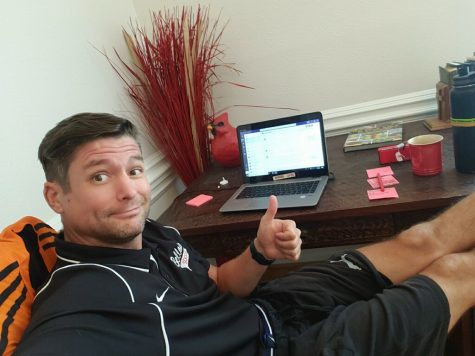
In his seat in front of his laptop, Rodgers teaches English II, teaching short stories, explaining the significance of the minority author of “Abuela Invents the Zero” and analyzing characters of color of “Push Up”. For Rodgers, it’s easy to interpret and explain certain works of literature as a teacher. However, he worries about his students’ social learning atmosphere because of the interaction high school students are missing.
“I’m mostly concerned for students living in isolation,” Rodgers said. “Many of our students thrive on face-to-face interaction. In fact, school might be the only place someone will smile and greet you, give a high five, or ask about your day. Family dynamics range from home to home, and some students feel eager to leave one environment at home to spend time in a different environment at school.”
Houle hopes, despite the disconnection he feels, he can still help struggling students.
“I teach because I feel that perhaps I’m one of the good guys,” Houle said. “Being part of the solution and not the problem. Saving the world from apathy. Battling anti-intellectualism and the fear of being wrong. You know, superhero stuff.”
Houle has not lost his inspiration to teach.
“My motivation has not changed,” Houle said. “The methods by which I go about my business have, but I am still driven by the desire to do good. Doing the next right thing. Not always possible, but always striving. We will persevere.”


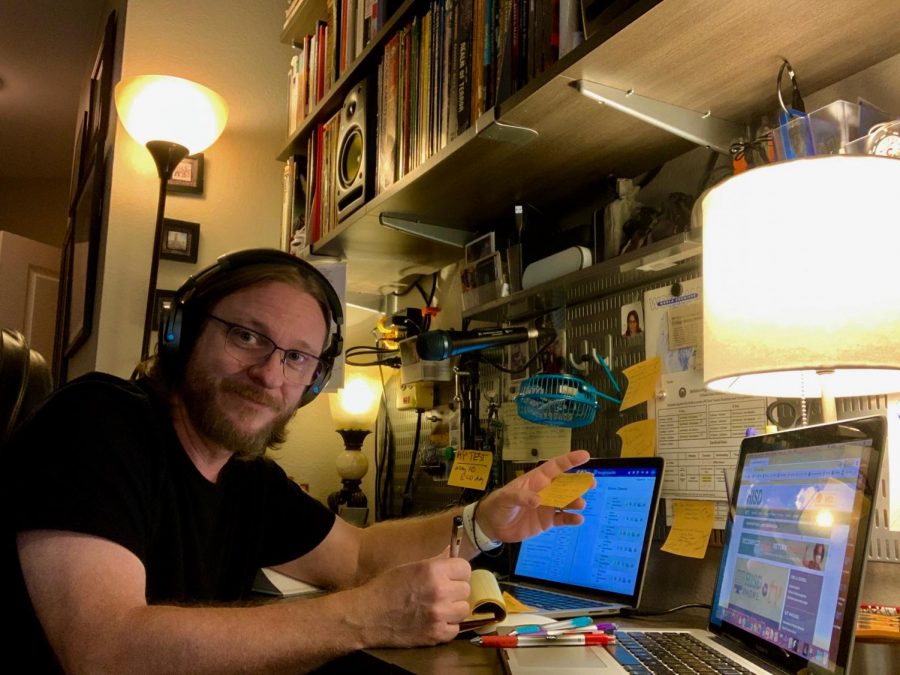
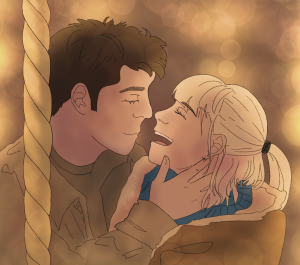

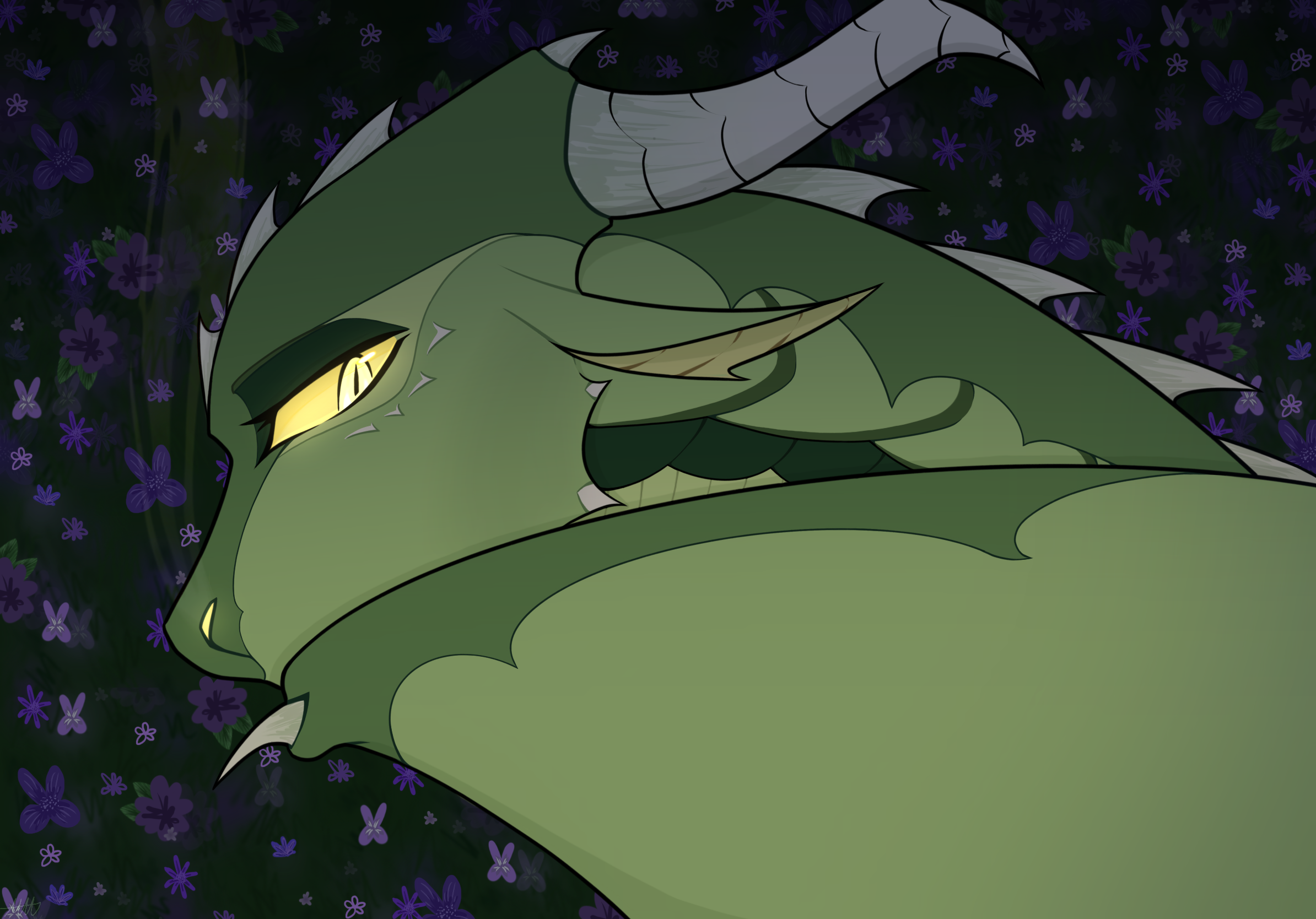

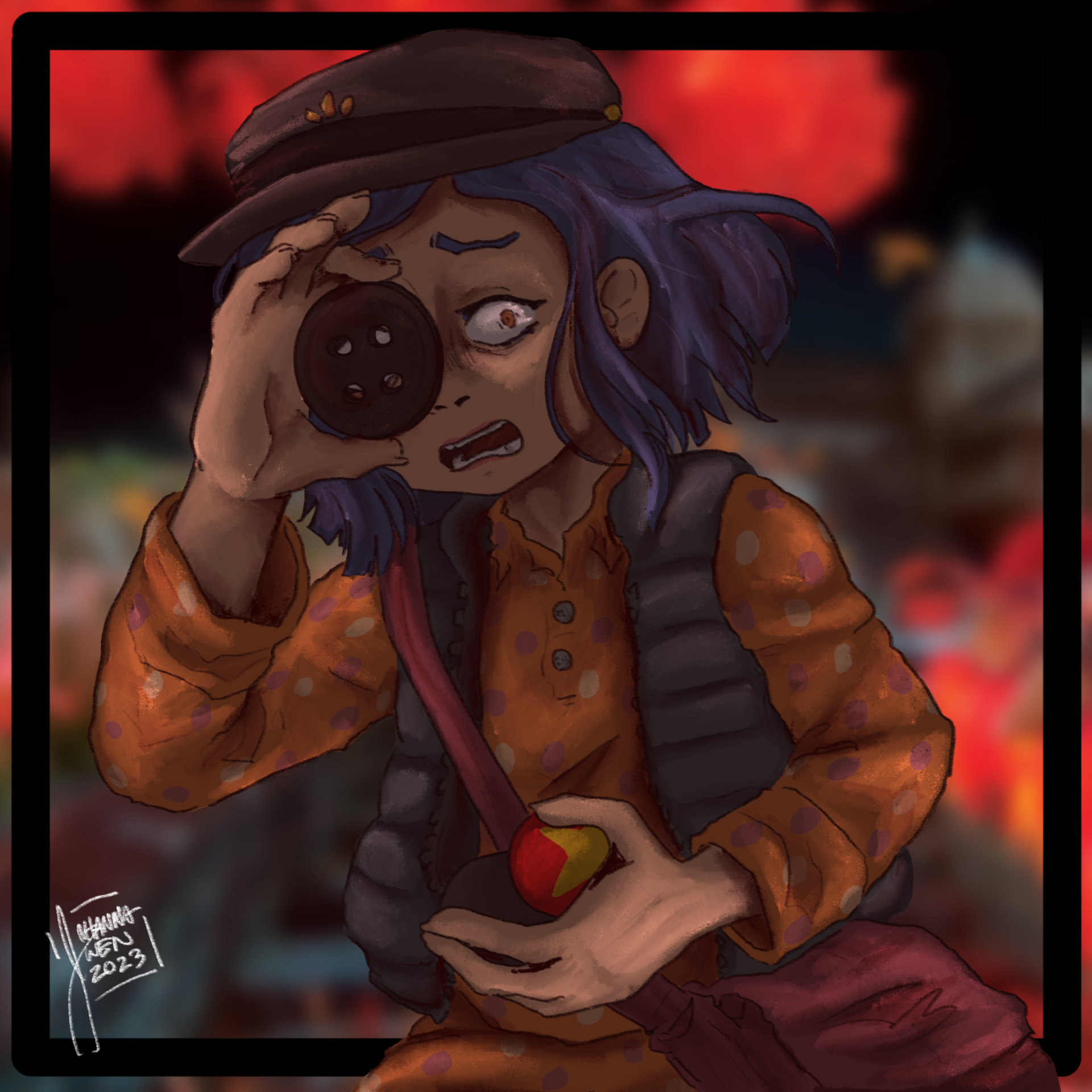
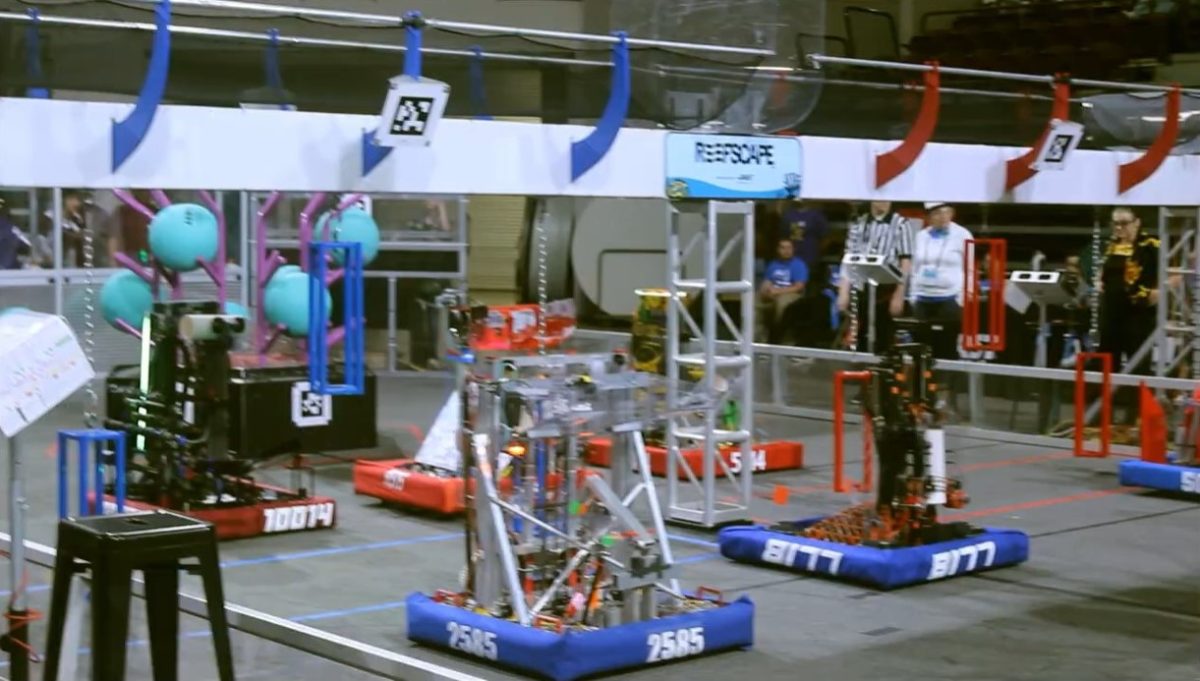



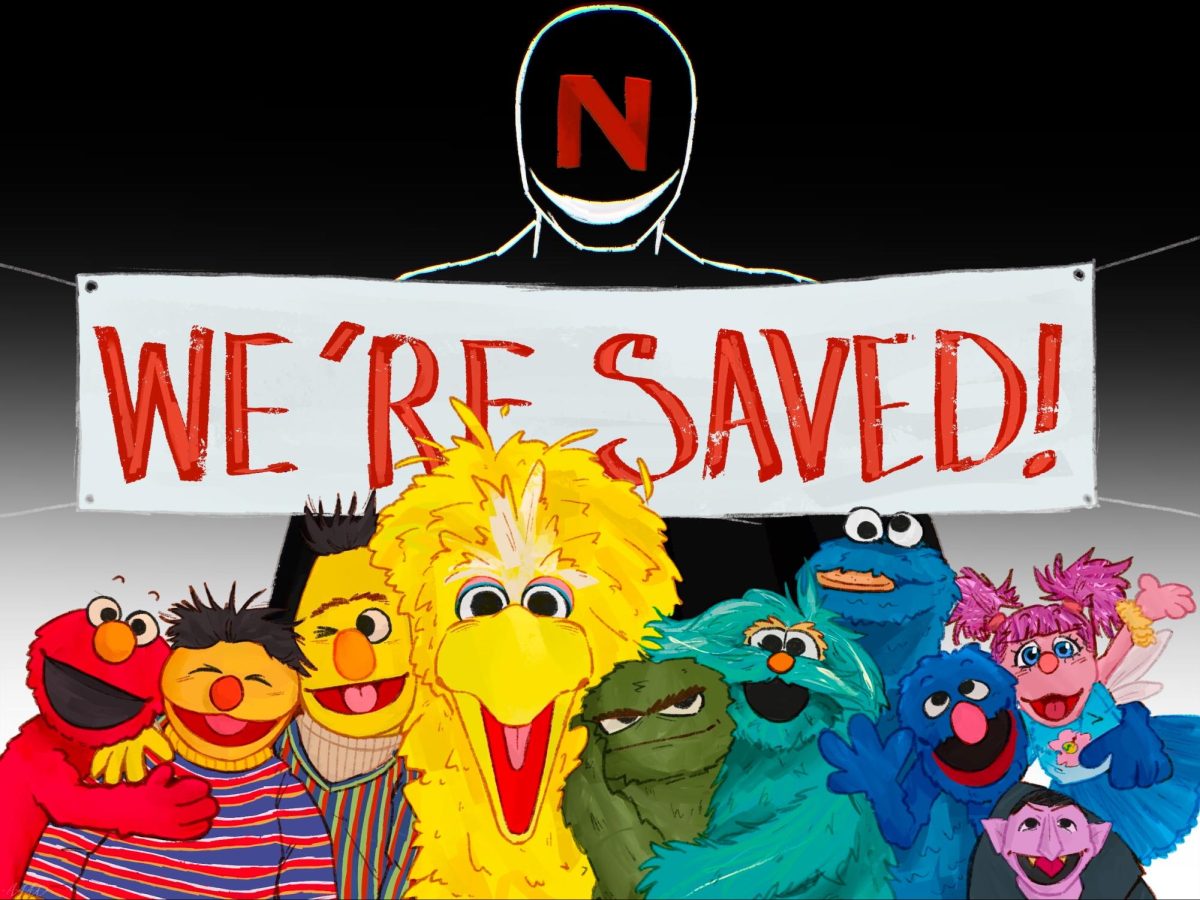
Juanita Camarillo • Nov 13, 2020 at 10:29 pm
Thankful for heroes like Houle, bar – raisers like MVu, and loving leaders like Rodgers- teachers living everyday lives in the midst of an out of this world teaching situation. And yet, they manage. And they do more than manage… they bring wisdom, raise expectations, and help connect the heart with the mind. May the rest of us teachers remember why we serve and love and teach- and hold on to that in the midst of this pandemic. IJN, Am.